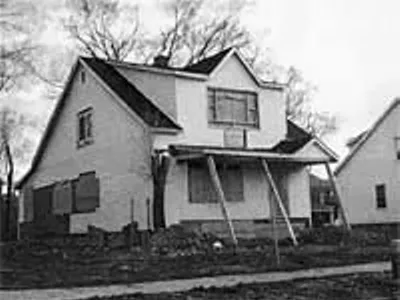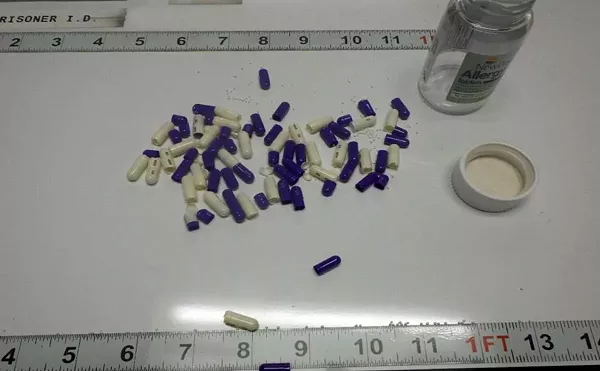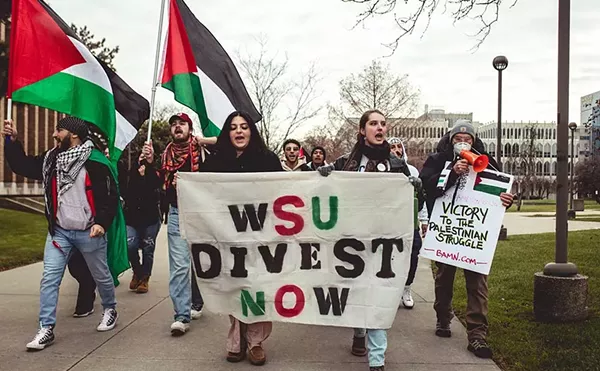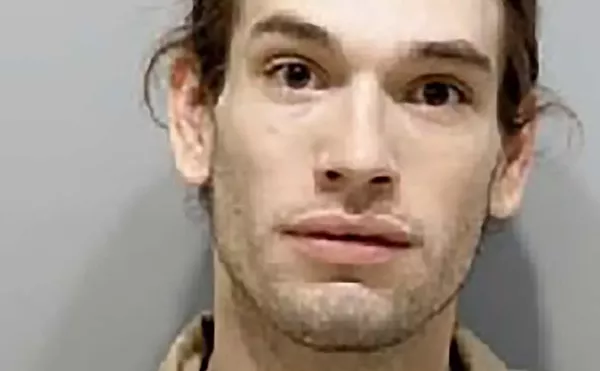Editor’s note: This is an edited version of the fourth in a series of stories being written by the editor of Gambit Weekly, an alternative paper in News Orleans.
“Why is this our problem?
I say this to Cindy. My family and I have been in her home in Carencro, La., about 150 miles west of New Orleans, for a month now.
I say this to her when she brings up the matter of the various children in our evacuee household, trying to plan out the next day and just who was going to care for whom. I say this to her on the night of my 42nd birthday, a few hours after my wife, Tami, received the news that she’s a top candidate for a job in another city. A job that might mean that we’ve already spent our last night together in New Orleans, the Friday before the storm.
I say this to Cindy just a day after she watched my own kids, comforted them in our absence so my wife and I could take our first trip into the city.
I say this after a month of living on FEMA allowances and on checks from family and friends, including the most recent gift — an envelope with one hundred dollars from a retired couple who taught me in high school. “Dear Mike: Just a note to let you know we are thinking of you.”
I say this, and I regret it. More discussions and apologies will come later. Right now, it’s late at night, when I usually start to dwell on the losses.
But the news isn’t about the losses anymore. It’s all about the rebuild, about the new New Orleans. The unclaimed dead are still lying unrecognized in a makeshift morgue, but we’re now talking about Mardi Gras and conventions and Super Bowls. Mayor Ray Nagin says he’s tired of hearing helicopters, he wants to hear jazz. It’s a necessary step forward. A city needs a timetable. The staff of my newspaper, Gambit Weekly, is meeting to discuss the comeback. Lt. Gov. Mitch Landrieu announced a four-point plan titled “Rebirth: Restoring the Soul of America.” It has to be this way. Things are stepping up.
The new New Orleans. No-bid contracts are passed around like casino chips while the streets outside are barely cleared of branches and bodies. My city of parades and poverty is about to see billions pass through it. Conservative city fathers now talk like social utopians, poised to re-engineer new schools and housing for all. Furniture stores are stocking new refrigerators. You have to start somewhere, right? There’s going to be money in these streets. Halliburton stock is climbing.
For some — even those who have lived for generations in New Orleans — there’s no going back. At the Cajundome in Lafayette, La., which has been turned into a shelter for New Orleans evacuees, I watched CNN with a 74-year-old woman who looked at the reports of the toxic gumbo that covered the city and uttered one word: “Horrendous.” Everyone she knows is from New Orleans. “My people are all on the same boat,” she told me. “I have to find me another boat.”
Less than half the people in Houston shelters say they’re going back, according to a Washington Post poll. A friend was standing in a Houston food stamp line, talking to a man who’d lived in our city’s housing projects. He wasn’t going back. “Death City,” he called it.
Whenever we talk about going back to live, we always add a disclaimer: as long as it’s not poison. As long as somebody besides George Bush’s Environmental Protection Agency or the state of Louisiana’s Department of Environmental Quality shows us that it is safe for our children. That future headlines won’t be about a mysterious Katrina Cough.
Wilma Subra is a New Iberia, La., chemist, a longtime environmental activist, and a recipient of a MacArthur Foundation genius grant. “They’re letting the people go in those residential areas where the air is bad,” she told Lafayette’s Independent Weekly. “This is a political response to people desperate to go in.”
Yet on Sept. 15, Nagin announced the opening of New Orleans, zip code by zip code. There could be 180,000 of us heading into town to retrieve carloads of what we’d left behind. Even President George W. Bush warned that the environment was too risky.
Tami and I talk about it. We decide to go in and beat the rush.
The journey east on Interstate 10 is an eerily familiar drive through the suburbs. The first destroyed thing we see is a self-storage unit. It is blown apart, the exterior walls ripped off. Loose clothes, chairs, old TVs, bags of Mardi Gras beads — it all cascades out of the units, twice rejected.
The checkpoints are real checkpoints, with heavily armed guards, barricades, and mounds of dirt and gravel. But we had rehearsed our lines: Tami is a doctor. She wants to retrieve her medical equipment. That and her medical license are enough to get us waved through, we’d heard. Once in, we’d be free to conduct other missions.
We pass quickly through the recommended Metairie Road checkpoint. It’s Mid-City. New Orleans. All roads open before us. We feel adrift, like tourists.
Turning onto Bienville, we pass the Lindy Boggs Medical Center, where we gag from a smell that we don’t attempt to identify. We speed up to reach the offices of Gambit Weekly, where I’ve served as editor for seven years. Three cars are in a nearby parking lot. Somebody else must be here. When we pull up next to the cars, we see they are covered with ash; back windows are blown out.
On the outside of the building is a brown line like a dirty bathtub ring, indicating that the office took in about 2 feet of water. We let ourselves in and slip through the dark hall. Mold is everywhere. It’s splattered across the walls like splotches of dried blood after a mob hit. The air is thick with it.
Stepping through the offices without a flashlight, wearing shorts and sandals, we try not to touch the walls, try not to wipe out. This is not the way it should be done. I grab grocery bags and go to my office to fill them with pictures from my walls. The framed, autographed 45s of a zydeco king. The children’s first drawings. The mold had crept up behind the pictures. Another day, and they’d be covered in it.
After about 10 minutes, Tami and I are both getting headaches. We’re also starting to panic a little, for no real reason. I rifle through my desk, grab my business cards. I pull down framed pictures from co-workers’ walls, enough to fill the car. Our heads are pounding. The place is really scaring us. I go back to my office one more time to grab a Harvey Pekar bobblehead off the shelf, and we take off.
Mayor Nagin has to delay reopening the city. Federal officials are telling him to slow down — and then Hurricane Rita appears. As those rains start to fall in Lafayette, I stop by a shelter at Progressive Baptist Church. Inside, everyone is busy, getting ready for the likely loss of electricity. A church member is chopping hard-boiled eggs; she’ll be putting chicken salad on ice.
Currently, about 150 people from the New Orleans area are here. The newest arrivals are set up in cots in the fellowship hall, where a large-screen TV carries the news of Rita, with live images of water flowing back into the Lower Ninth Ward.
Shannon Jordan is here with her family. Her mom had purchased the family home in 1965, following Hurricane Betsy. It’s on Choctaw Street in the Lower Nine. The water is past your head.
The extended family is here at Progressive Baptist, including kids ranging from 6 years old on up to Shannon’s son, who’s a senior in high school and is now working his first job ever, at McDonald’s. Shannon’s brother, Quentrell, moves in and out of the conversation. He tells me that the kids are looking at the adults to make sure they’re strong. There are some chairs set up under a tree outside. That’s where the adults go when they’re not feeling so strong. “We’ll sit in the mornings; we’ll sit there late at night,” Quentrell says.
Shannon predicts they’ll all go back to live in New Orleans. If they’d seen the dead bodies, maybe they wouldn’t. But right now, they’re planning to return. Shannon is a reservationist at the Windsor Court Hotel; she still has a job.
Talking to her, I start to feel more hopeful for the new New Orleans.
“My mother’s pretty subdued now,” Shannon says. “When she goes in and sees, that’s when the emotions will come. So I’m going to just take her in with me. We’re going to build from there.”
Send comments to letters@metrotimes.com





